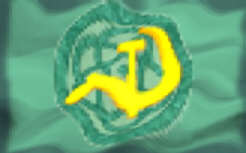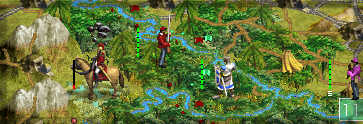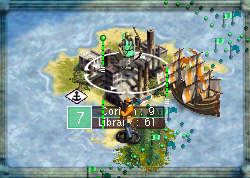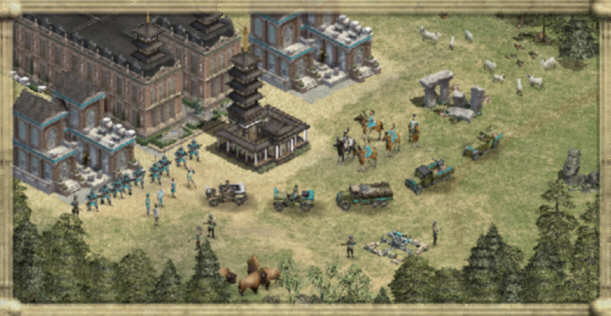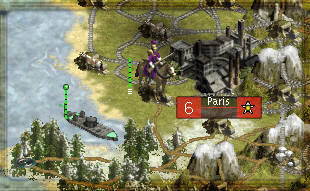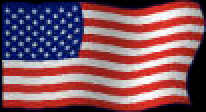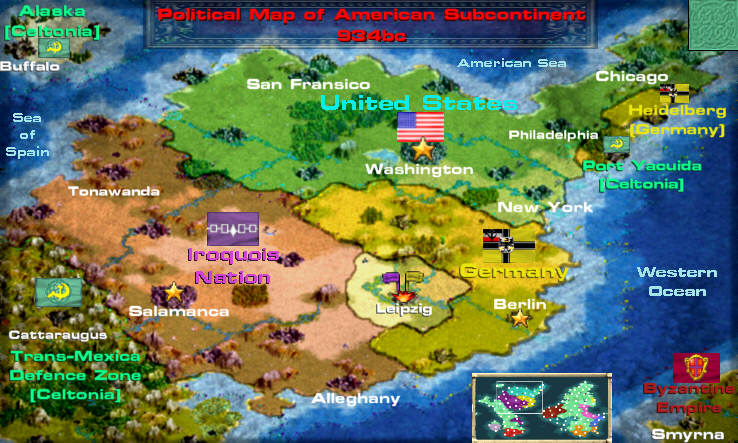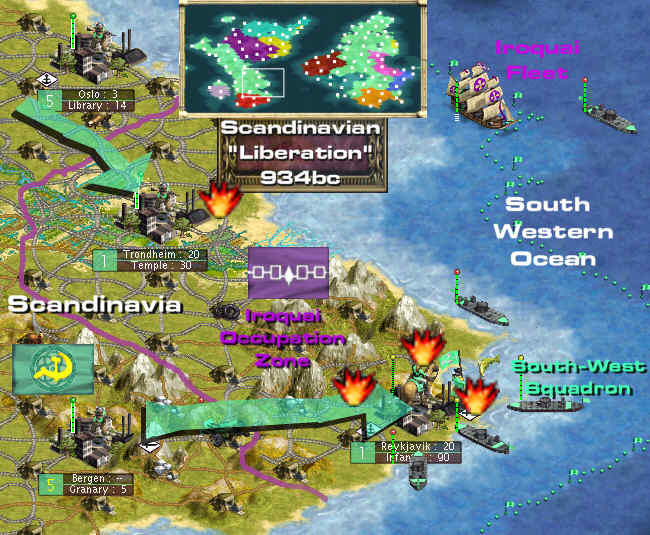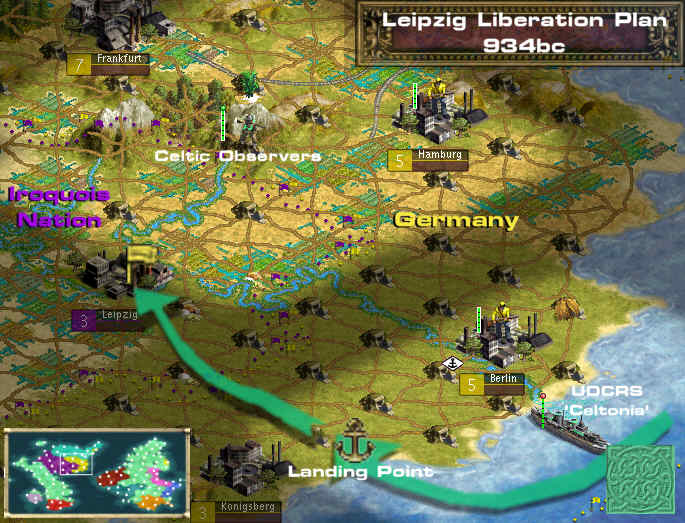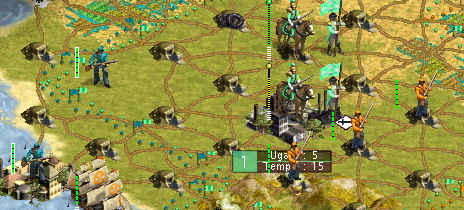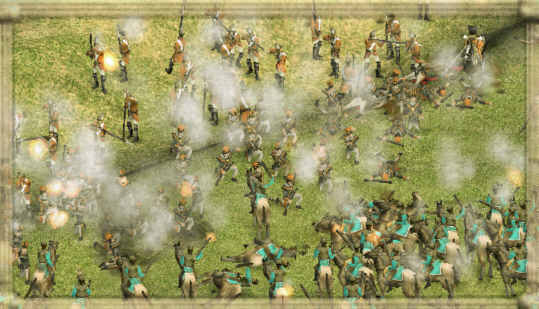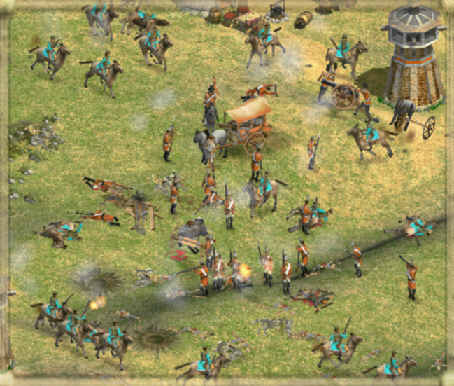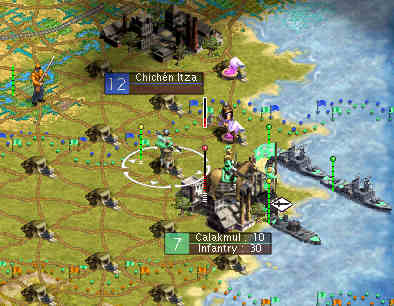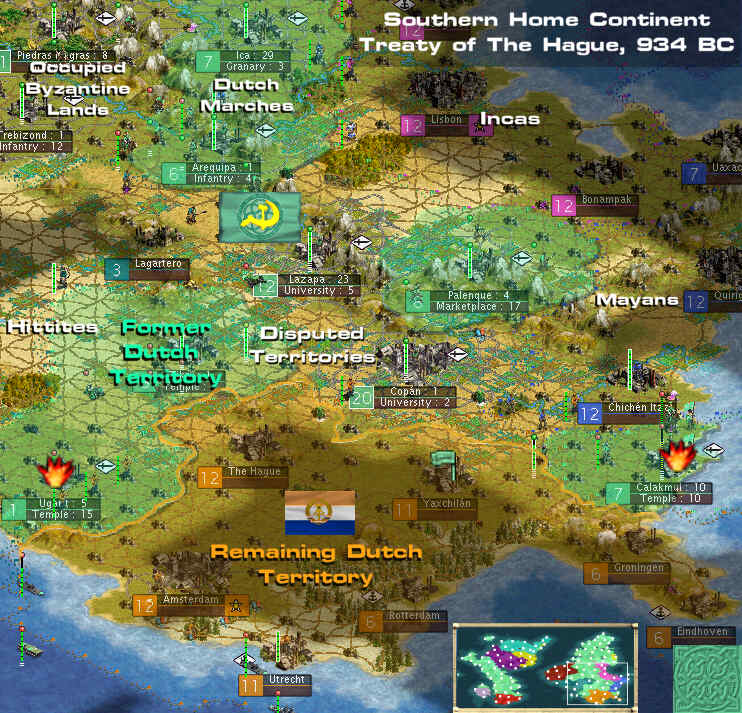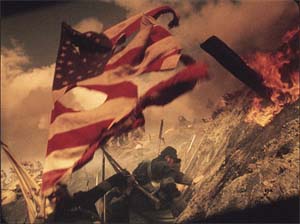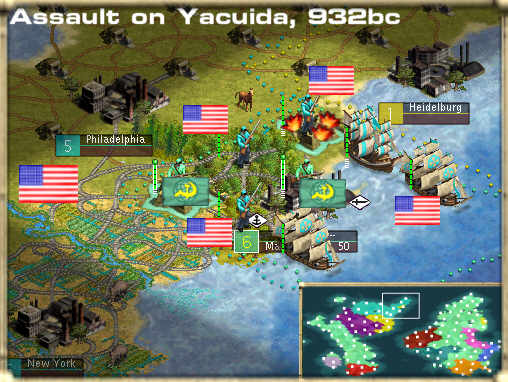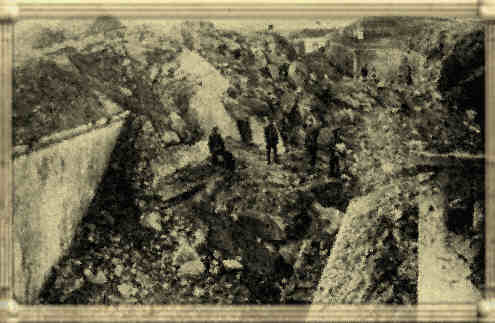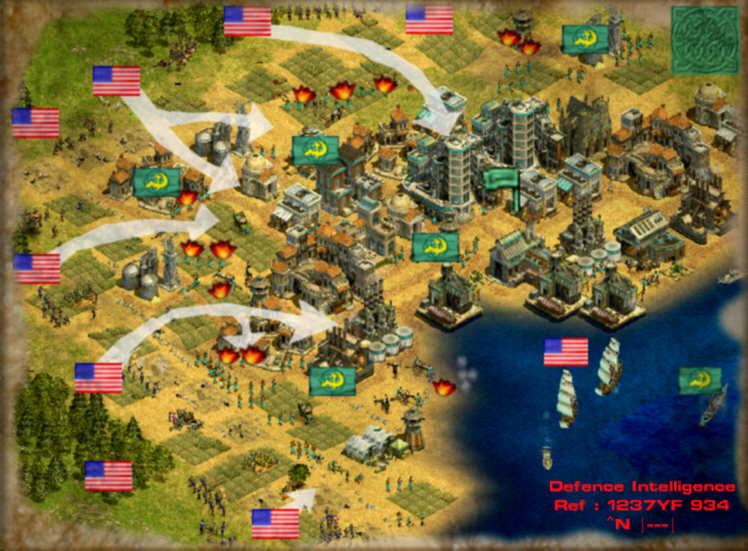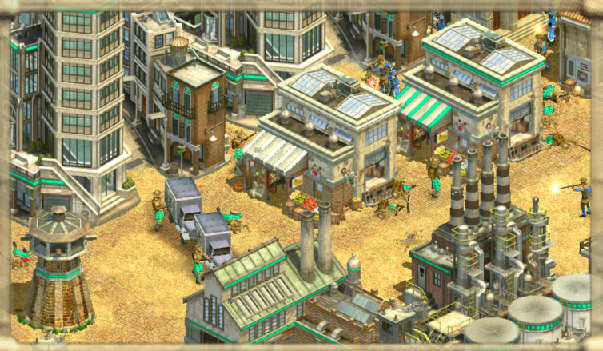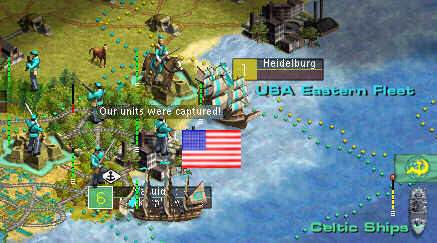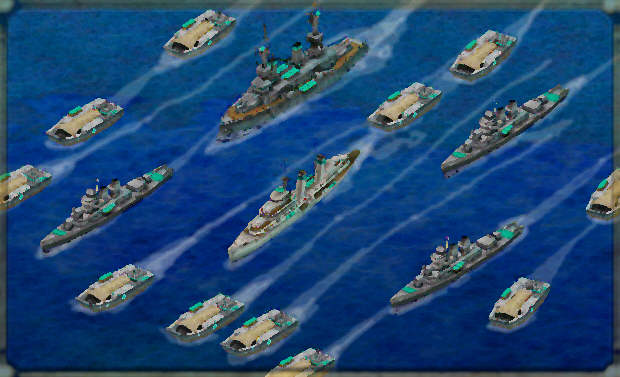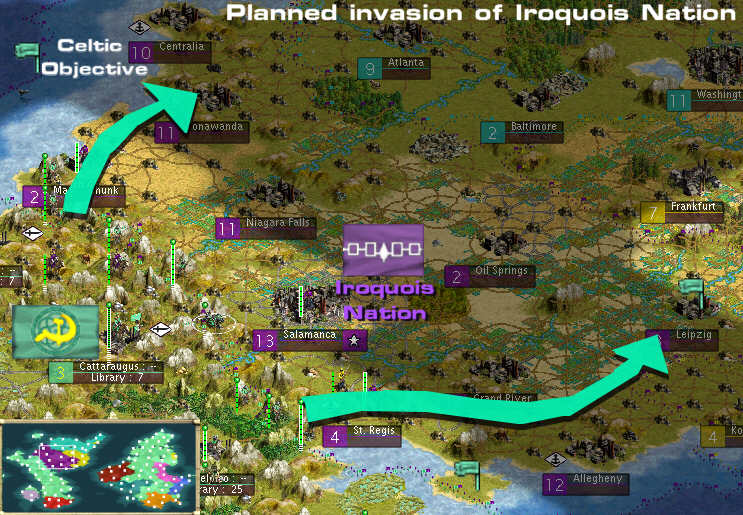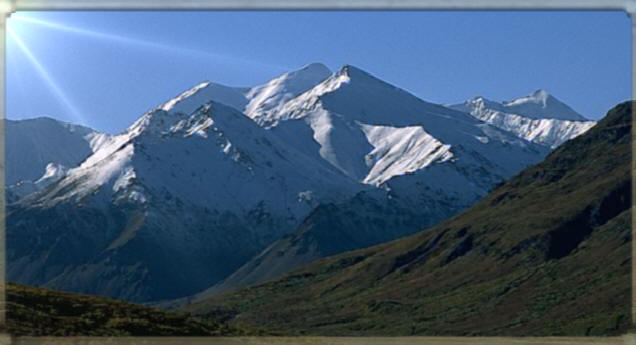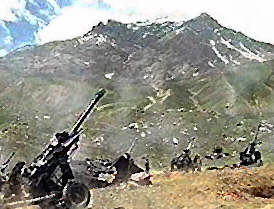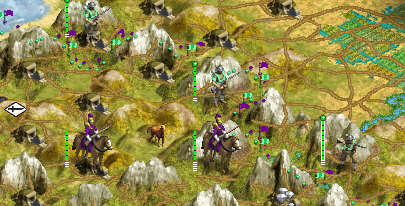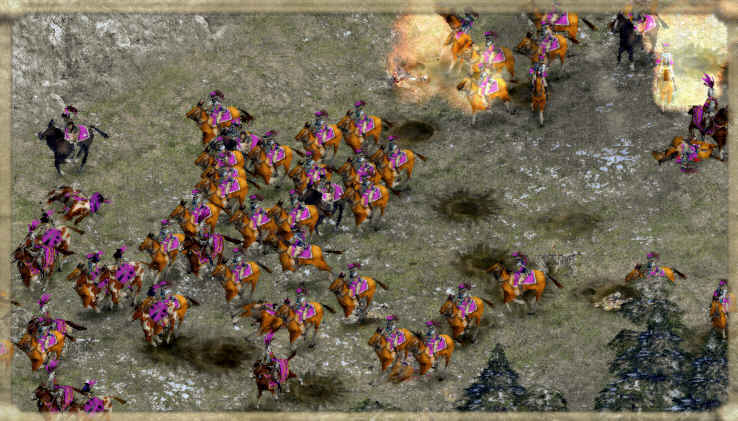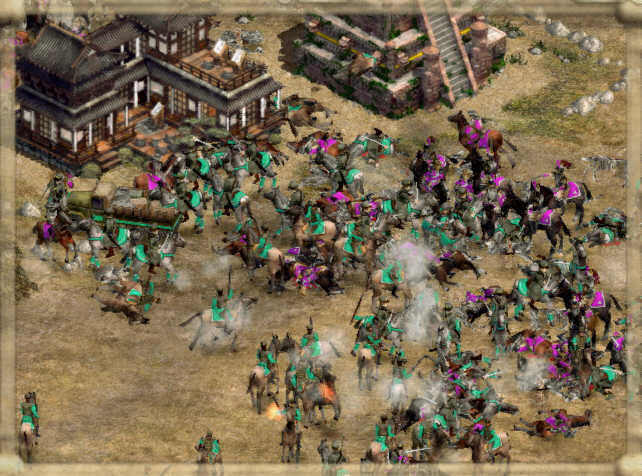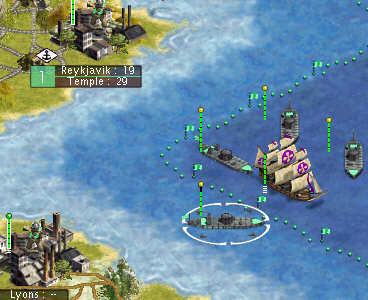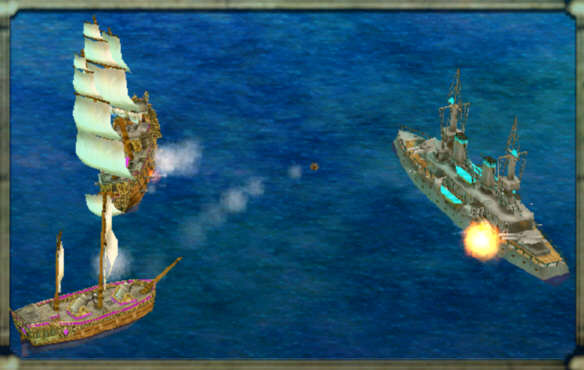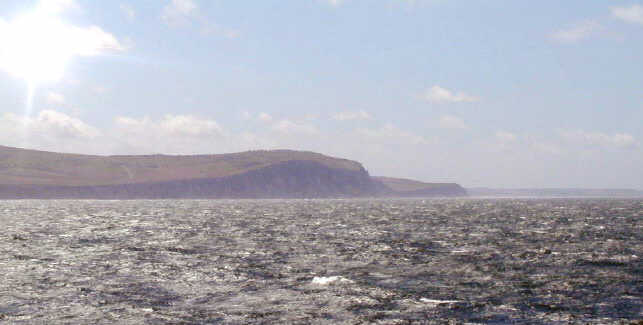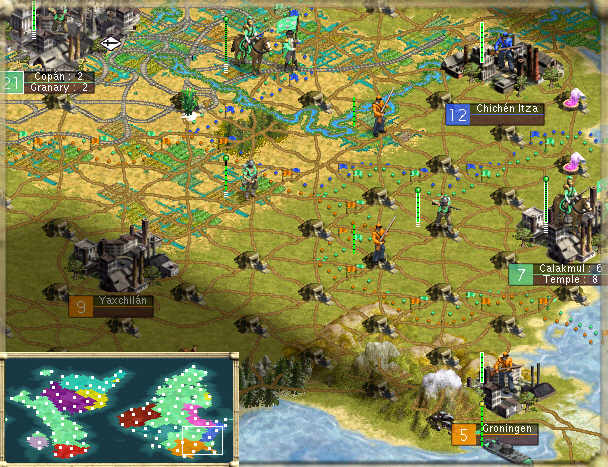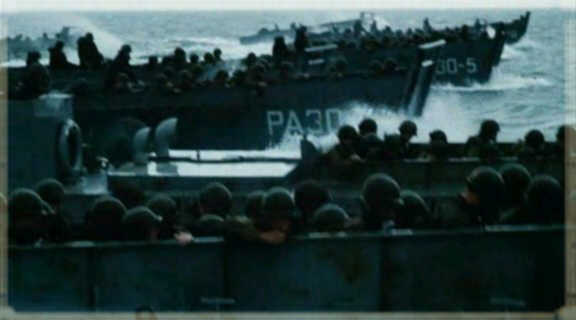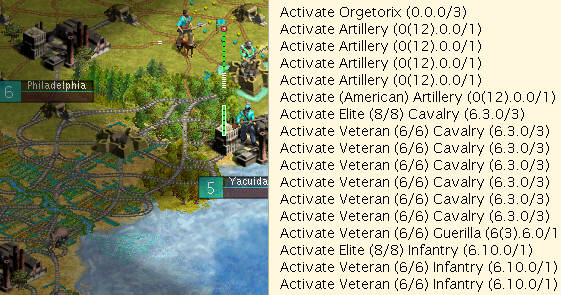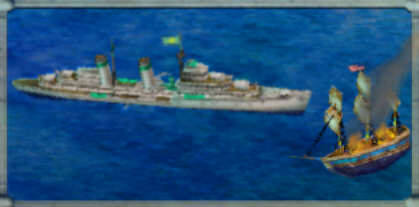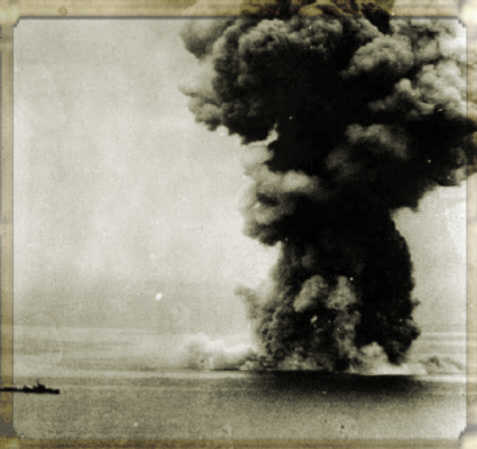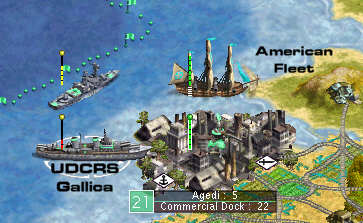Exiled from Celtonia for crimes of sedition and for refusing to use modern printing machines, Daftpanzer, the Mad Celtic Scribe, sits in a shed in the frozen land of Alaska and writes his epic work...
 History of the world so far, according to the Celts
History of the world so far, according to the Celts
The World:
The sacred number of Two is repeated in the geology of this world. There are two great continents, simply known to the Celts as the Home Continent and the Other Continent. Two oceans and two polar seas separate these continents. The Other Contient has two large islands, known as Alaska and Gotland. The Home Continent has two small islands/archipelagos, called Coritan and the East Isles.
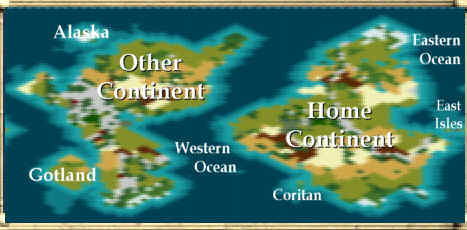
The Humans:
Human civilisations began to develop all around the world at around 5000bc. Little is recorded from the first 3000 years of civilisation. But by 2000bc, 14 separate civilisations had been well established, dividing up much of the world between them.
On the home continent, there were:
The Celts, The Inca, The Portuguese, The Byzantines, the Mayans, The Hittites, and The Dutch.
On the other continent, there were:
The Aztecs, The Spanish, The French, The Germans, The Iroquois, The Americans and The Scandinavians.
The Celtic History:
Tales tell of the first expedition of Celtic clans to create a second city, and how it was ambushed and massacred by native tribes. But these barbarians were gradually defeated, and eventually more cities were founded as the Celtic culture began to expand. Wise and enlightened leaders emerged to weld the clans into a unified civilization. Celtonia was born, with a destiny to enforce peace and justice throughout the world.
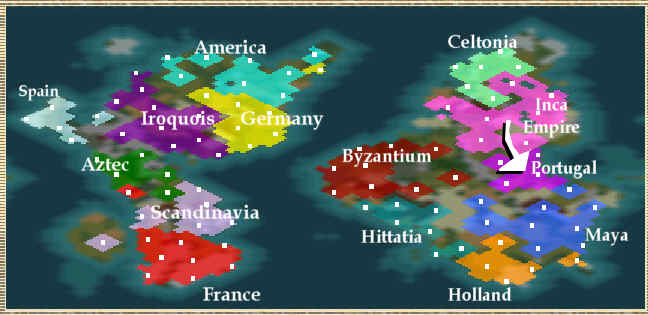
(World by 2050bc)
Soon the Celts came into contact with another civilisation, the Incas. The Inca were warlike and already very powerful. Soon they had completely destroyed and absorbed the Portuguese civilisation. Regrettably, the Celts had helped this by destroying a Portuguese attempt to colonise in Celtonia, mistaking it for hostile expansion. The Inca then entered a long period of war with the Celts in the north and the Mayans in the south.
The Incas expanded into Mayan land, but in the north the Celts were able to fight back. The Celts had access to iron and, with their elite Gallic Swordsmen, they fought the Inca to a standstill and even claimed some land.
After this first period of war lasting centuries, there was again a time of uneasy peace. It was during this time that the Vikings arrived after making the first trans-continental voyages, creating colonies on the northern tip of Celtonia. The Vikings and Celts would live in peace for a long time. The Vikings established a colonial empire at a very early time in history, with colonies scattered all around the world. But they never had any real focused military power beyond their own homeland.
Inspired by the Vikings, Celtic voyages later managed to make their own ocean crossing to reach the other continent. The Celts were able to establish contacts with all of the civilizations of the world at a fairly early time in history. The Celts were able to profit from this by trading ideas and technology between the continents. Celtic colonies were also created on small islands off the home continent during this time.
Later the medieval age dawned, and there were several centuries of renewed war with the Inca. The Celts were among the first to use armoured medieval infantry and concentrated trebuchet artillery. The Celts tried hard to push south, but at the walls of the Inca capitol they were painfully forced back by the Inca, who were also developing new weapons. The Celts now paid the Byzantines to enter the war against the Inca. The Byzantines had a powerful force of armoured horsemen. This time, the Mayans, Byzantines and Celts smashed the Inca power for good.
The Celts took control of much of northern Inca land including their capitol. But further south, they did their best to help the Inca survive, while the Mayans, Dutch, and Byzantines tried to take the last Inca lands.
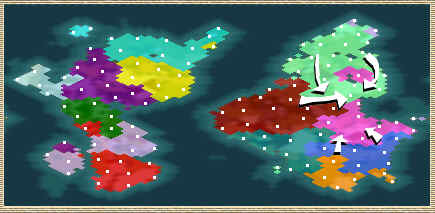
(Celts overrun Incan heartlands around 1550bc)
The Celts now established a strong nation in the north of the home continent. Relations with the Byzantines turned sour after they tried to destroy the last free Inca cities, and also tried to attack the Viking colonies on the north of Celtonia.
Later, on the other continent, the Aztecs were wiped out by Germany, before the Celts really knew what was happening. Two civilizations had now been destroyed, and the Celts were determined the Aztecs would be the last to suffer such a fate.
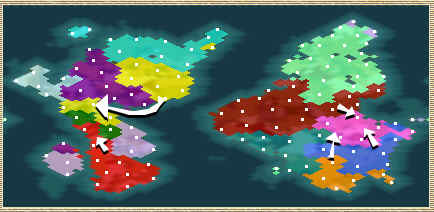
(Aztecs fall to Germany around 1475bc, while France begins a long conquest of Scandinavia and the surviving Incan empire continues to be partitioned)
Back home, there was war with the Byzantines, Hittites and Mayans in turn. The Hittites did the most damage with the first use of massed cavalry in a surprise attack, almost crippling Celtonia. The Dutch had a short-lived expansion into parts of the old Inca empire, but were later threatened by the rallying Mayans. The Dutch held out only because of their elite mercenary pikemen, until the Celts intervened and occupied much of the mayan lands (including their wonder-filled capitol) for some time.
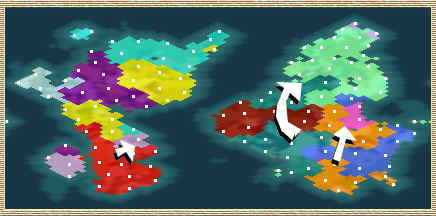
(Short-lived Hittite and Dutch expansion)
At the end, the Celts were the strongest single power on their continent, with their allies the Dutch also strong in the south. Gunpowder weapons and new cavalry tactics had now arrived, revolutionising warfare. With their borders seemingly secure, the Celts abandoned the old monarchy system in favour of a very productive democracy.
Celtic influence spread to the other continent when Spain, and later America, declared war. A first attempt at invading Spain was a disaster, despite the Spanish having only five main cities and medieval technology. Around ten Celtic divisions were completely massacred. This disaster could only be avenged by a complete defeat of the Spanish. Meanwhile, the island of Alaska was captured from America in the first successful amphibious operation. The Celts then returned to Spain in force, this time with improved rifles, and much of the country was finally conquered. Only one Spanish city remained free.
Meanwhile, after conquering and colonising the Aztecs, the Germans were later attacked by both their neighbours, the Iroquois and the USA. Germany could not hold against these two powerful nations. The USA grabbed the Aztec lands, while the Iroquois overran much of Germany. The Celts provided a refuge for the German king, giving the Germans one of the cities captured from the Incas on the home continent, half a world away from Germany. Their civilisation survived as Berlin was overrun.
By now Scandinavia had gone into decline. They declared war on the Celts, who replied by annexing several Scandinavian colonies. The Scandinavians also suffered losses to the Americans, and lost most of their homeland to France. In the end, they were exiled to a single large island with only three main cities. Meanwhile, the industrial age dawned for the Celts, with others following later. Many nations began to use new improved rifles in battle.
The Celts also pioneered the use of steam power and railways at this time. They also developed ironclads, the only nation to do so. Celtic naval power was to gradually increase far beyond anything else in the world, with the new resources and technology available. Meanwhile, cavalry attacks remained the normal tactic on land. The Celts began to lean away from democracy towards communism as a form of government for their widespread peacekeeping areas.
The Iroquois and the USA looked set to dominate the world with their powerful alliance and increasing industry and technology. But then the Iroquois turned on the Americans in a surprise betrayal. As the Iroquois overran much of America, with only Washington and a few tough northern cities holding out, the Celts saw a chance to intervene to prevent a single Iroquois superpower. World war one began.
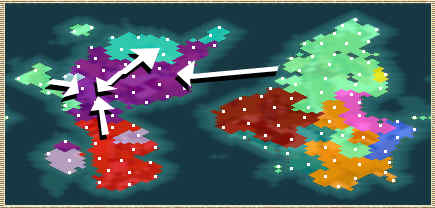
(Start of world war one, 1009bc. Greatest Iroquois expansion. Most of spain has been conquered by Celtic forces)
The Celts attacked from Spain, and later landed in occupied Germany to return those cities to the exiled German control. The French also attacked the Aztec lands after they were bribed to join the war, and the USA was still holding out and fighting back. After an exhausting war the Iroquois were defeated and brought to peace, although their homeland was mainly untouched. The Celts became the worlds leading power, able to fight on both continents. And they needed to be, as the Celts now had few friends.
Liberating all of Germany was a major achievement for the Celts. They also helped restore the borders of America and returned much of Spain to independent control, but still held onto the Aztec lands. Only a little actual Iroquois land was occupied after ww1.
But France now became fascist and even more aggressive. The French overran Spanish lands almost as soon as the Celts had made them independent. The Celts were forced to hand over an island colony captured from the Vikings as a home for Isabella as all Spain was conquered and badly looted by the French fascists. It was not long after ww1 and the Celts still had hopes for a long period of peace. But on the home continent, the once-friendly Dutch had also begun to expand too much.
Additionally, the Hittites seemed weak and were now threatened by the Byzantines again. The Hittites and Byzantines had fought each other on/off for centuries, and usually the Byzantines had the advantage. But the Celts had often intervened to prevent conquest by either side.
As France began to take land from newly liberated Germany and also the Iroquois, The Celts saw no option but to declare war on all of the aggressive nations. The Celts declared war on France, and later declared war on the Dutch and the Byzantines at home, to safeguard Hittite and Mayan land. World war two began.
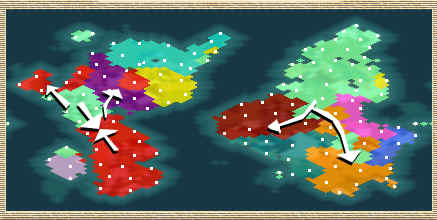
(Start of world war two, 952bc. Greatest French Expansion)
Celtic technology was by now gaining a lead over the other civilisations. Militarily, the Celts had better ships, infantry and artillery than the rest of the world. The Industry and infrastructure of Celtonia was also second to none. The Celts were, however, facing much of the rest of the world at this time.
The French fought back hard. Their attacks broke through fortified infantry, destroyed whole Celtic cavalry armies and captured cities, some of which were fought over several times. But as the years passed the French wore themselves out with careless attacks. The Celts made more progress after clearing Spain of all French control and concentrating on the main front in the old Aztec lands and Scandinavia.
In a series of massive battles, the Celts and the Iroquois fought the French all the way through into Scandinavia and then into northern France itself, where peace was eventually signed. Meanwhile the Byzantines also caved in after years of battles and skirmishing in the border regions, pressure from American naval attacks and troops landings, and finally the Celtic occupation of their eastern cities.
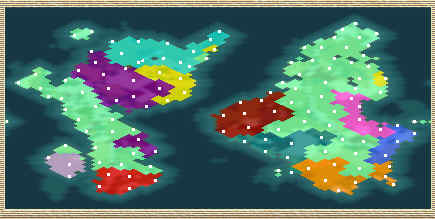
(World after defeat of France)
It is now the year 934bc. To this day, fighting with the Dutch continues. But the Hittites and Mayans look safe, and it seems only a matter of time before the remaining Dutch empire is dismantled, wars come to an end, and the Celts can reshape the world or even claim most of it for their own. However, in the fallout from the French war, the Iroquois have claimed some of Germany and Scandinavia as theirs and are still at war with France, which now becomes an issue for the Celts
The government of Celtonia is also more militaristic and corrupted than ever before. The future is uncertain
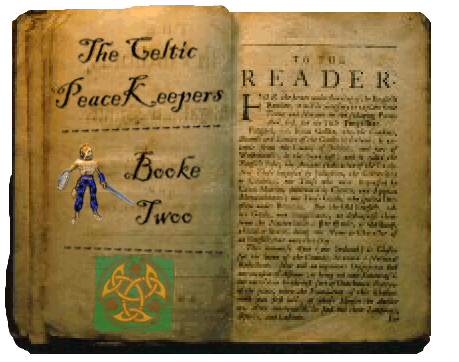
 ), and to keep a balance of power (maybe).
), and to keep a balance of power (maybe).  ) Id like to say thanks for the replies in the old story thread and sorry for not updating enough. I am truly honoured that anyone liked my story. Its been a while and I dont know if anyone ill be bothered now, but im still determined to finish the story, eventually
So here goes...
) Id like to say thanks for the replies in the old story thread and sorry for not updating enough. I am truly honoured that anyone liked my story. Its been a while and I dont know if anyone ill be bothered now, but im still determined to finish the story, eventually
So here goes... 









